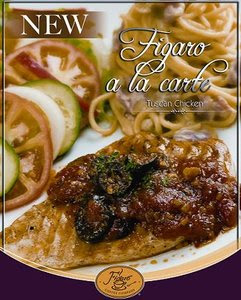 TERMS ON CHARACTERISTICS OF COFFEE
TERMS ON CHARACTERISTICS OF COFFEEFlavor - the taste at the tip of the tongue combined with aroma, acidity and body.
Aroma - the smell of coffee. Experts say taste is 90% aroma. Aroma cannot be separated from acidity and flavor.
Acidity - the tartness, liveliness or twist the coffee leaves in your tongue.
Body - the heaviness, richness at the back of the tongue when you swish the coffee around your mouth
You stand in line in a coffee shop and you don't know what's the difference between a Cappuccino and a Latte. Here's a glossary to help you acquaint yourself with coffee and tea terms.
Americano: a shot of espresso is added to a cup of fresh water heated to the right temperature. Not for the faint of heart.
Aftertaste. The flavor, hopefully pleasant, that lingers in the mouth after coffee is swallowed.
Arabica: A varietal of coffee beans used to produce the majority of quality and gourmet coffees. Arabica beans are very aromatic and highly flavorful and are considered the better beans to be used in coffee blends.Barista. Italian term for someone who works the espresso machine to make espresso coffee.
Bitter. A sometimes pleasant “bite” of flavor at the back of the tongue, often found in darker roasts.
Blend. Two or more kinds of coffee beans from different geographic origins, joined together so their characteristics complement each other to achieve a desired flavor profile.
Body. How heavy, thick, or thin brewed coffee feels in the mouth.
Bouquet. The combined perception of a cup of coffee’s aroma, fragrance, and aftertaste.
Bright. Sometimes used to describe a coffee with good, brisk acidity.
Buttery. Describes brewed coffee that combines a richness and pleasantly oily feeling in the mouth reminiscent of butter.
Cappuccino: a shot of espresso (number of shots depends on the size) with steamed milk and topped with a cap of hot, foamed milk; stronger than a latte
Caramel. When brewed coffee has a rich sweetness reminiscent of burnt sugar.
Chai: spicy black tea "infused with cardamom, cinnamon, black pepper and star anise"; can be drunk hot, iced, or in latte form
Chocolaty. Describes brewed coffee with a richness and sweetness reminiscent of chocolate.
Clean. Refers to brewed coffee that has no odd or tainted tastes.
Complex. Brewed coffee that provides a variety of pleasant aromas and tastes.
Creamy. Similar to buttery, a coffee that tastes and feels rich in the mouth.
Cupping. The technical term for tasting coffee to judge its characteristics.
Decaf: no caffeine; decaffeinated coffee
Delicate. Sometimes used to describe coffee with light, subtle flavors, discerned usually with the tip of the tongue.
Double: adding an extra shot of espresso to a drink that ordinarily only has one
Dry Method: One of two methods to process coffee beans when they are harvested. The Dry Method is when ripe cherries partially dry while on the tree. The beans are then spread out in the sun on patios, where they are raked and turned several times a day. This patio stage has the beans drying for two to three weeks. In the final Dry Method stage the dried beans move through hulling machines to remove the dried pulp, parchment, and silver skin.
Earthy. A flavor characteristic describing robust, somewhat spicy flavor.
Espresso: highly concentrated, heavily caffeinated coffee; it comes in the form of a shot
Espresso Con Panna: shot of espresso with a small scoop of whipped cream
Espresso Macchiato: espresso shot with a small amount of foamed milk
Ethos Water: essentially just expensive spring water
Flavor Shot: a few squirts of a particular flavored syrup that you can add to any beverage, coffee or not; many also come in a sugar-free version
Floral. Describes notes in a brewed coffee’s aroma or flavor reminiscent of flowers, usually found in lighter roasts.
Fragrance. The sensory impression gained by sniffing a cup of brewed coffee.
Fruity. Refers to flavor overtones reminiscent of fresh, ripe fruit such as berries.
Grading. From country to country, different coffee grades are assigned to crops or harvests of green coffee beans based on where and how they were grown and processed, their size and density, their overall quality, and a sample cup they produce.
Green Beans: Raw coffee beans that have not been roasted yet. Roasting is what brings out the full flavor of coffee.
Half-Caf: half caffeinated, half decaf
Hard bean: A coffee grown at the relatively high altitudes of 4,000 - 4,500 feet. Beans grown at these altitudes tend to mature more slowly. The slower growth creates beans that are harder and denser than other varietals. Hard beans are more desirable than others as they are more conducive to roasting.
High Grown. Refers to coffee beans grown at an elevation between 2,000 and 4,000 feet.
Kona: Kona is a coffee varietal grown only in Hawaii. It is prized for its fine, light flavour which is helped to develop by Kona region’s rich volcanic soil, high elevation, seasonal rainfall and afternoon cloud cover that shades the strong sun.
Kopi Luwak Coffee: Kopi Luwak is so unusual that many people think it’s a myth, but it is true. Civet eats the coffee fruits. The seeds (or beans) of the fruit pass through the animal’s digestive system and is excreted. These beans are then collected from the jungle floor and processed just like normal coffee. Some connoisseurs say this coffee has a chocolate undertone.
Latte: espresso, a lot of steamed milk, and a little bit of foam on top; not as strong as a cappuccino
Mellow. Describes brewed coffee with medium or low acidity and a smooth, well-rounded flavor.
Mocha: espresso, a lot of steamed milk, and mocha syrup, which is essentially dark chocolate syrup. Whipped cream is added on the top.
Monsooned. Describes particular coffee beans that after processing were exposed to humid monsoon winds in open-sided warehouses, a process that increases the body and reduces the acidity of the resulting roasted and brewed coffee.
Nutty. Refers to brewed coffee with a rich, earthy flavor recalling roasted nuts.
Peaberry: Considered a higher quality coffee due to its less frequent appearance. A typical coffee fruit (or “cherry”) has two beans in it. Yet, sometimes the cherries form with only a single bean. This is called Peaberry coffee. These single beans are often separated and sold as a distinctive grade of coffee. New Guinea is one of the more popular Peaberry coffees.
Rich. Having intense, full aroma, flavor, and aftertaste.
Robusta: Often considered a lesser quality coffee varietal compared to Arabica, Robusta coffee beans are rarely sold on their own. Robusta beans are what add a better Crema to an espresso extraction. One odd fact about Robusta is that it has almost twice as much caffeine as Arabica coffee, yet is lower in flavor. Grown between sea level and 2,000 feet Robusta beans are processed using the dry method. They are produced primarily in Africa and South East Asia. Commercial coffee companies like using Robusta coffee as bases for instant coffee as it is cheap to process.
Shot: 1 oz, usually associated with espresso
Skinny: made with nonfat milk; if the drink has syrup, the syrup will be sugar-free
Soy milk: milk for those who either don't like or can't drink regular milk, made from soy beans, no lactose
Spicy. Describes flavor overtones in brewed coffee reminiscent of usually sweet spices such as cinnamon or cloves.
Strictly High Grown. Coffee beans grown at elevations between 4,000 and 6,000 feet.
Sweet. Refers to brewed coffee with smooth, generally mild overtones associated with sweetness.
Syrupy. Describes brewed coffee with a combination of good body and sweetness that brings to mind syrup.
Toasty. Having aroma and flavor reminiscent of good toast, a sign that the coffee was roasted well.
Triple: adding a third espresso shot to a drink that originally has two
Varietal: Because coffee is grown in many different geographical regions, the climate and soil have a direct effect on the plant’s fruits. While all coffee is grown from the same species of plant, the climate and soils alter the taste of coffee, and thus each different version is called a varietal.
Wet Method: A form of processing coffee where a machine breaks away the cherries’ outer skin. This serves to remove most of the pulp and expose the parchment-covered beans. The next step of the Wet Method is to remove the sticky coating called mucilage. This is where the method gets its name as the beans are placed in large tanks of water to ferment for about 24 hours and afterward are throughly washed. The clean beans dry in the sun for two or three days or are air dried by a machine. In the last step, a hulling or milling machine removes most of the parchement and silver skin to expose the green beans. These green beans are then sold to coffee roasters to be used in the different blends that they create.
Winy. Describes coffee flavor combining fruitiness and acidity.
Glossary of Coffee Terminology
Coffee Terminology and Glossaries
Starbucks Glossary of Terms
Some Starbucks Drinks:
Caramel Frappuccino Blended Coffee
Coffee, milk and caramel blended with ice and topped with whipped cream and a swirl of caramel sauce.
Coffee Frappuccino Blended Coffee
Coffee blended with ice.
Mocha Frappuccino Blended Coffee
Coffee, milk and chocolate syrup blended with ice and topped with whipped cream.
Top 100 Espresso Machines
Japanese Green Tea Glossary
Tea Glossary






















